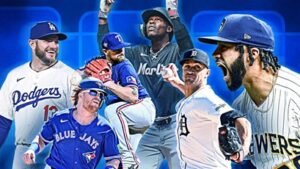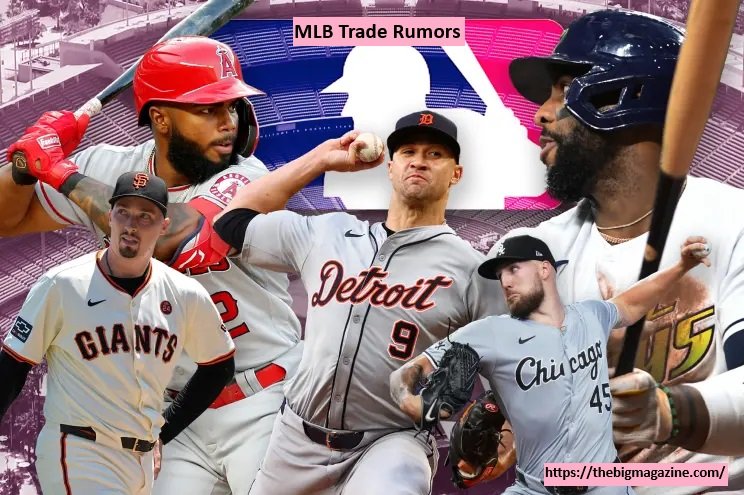The MLB trade deadline is one of the most exciting and nerve-wracking times in the baseball season. Players, fans, and teams alike watch closely as rumors swirl, deals are made, and rosters are reshuffled in hopes of a postseason push or a brighter future. This article will explore the intricacies of MLB trade rumors, how they originate, their impact on players and teams, and some notable trades from recent history.
What Are MLB Trade Rumors?
MLB trade rumors are speculative reports or whispers about potential player trades between Major League Baseball teams. These rumors often circulate in the months leading up to the trade deadline, which typically falls on July 31st each year. The rumors can involve high-profile stars, rising prospects, or even lesser-known players who might fill a specific need for a team.
MLB trade rumors can originate from various sources, including sports journalists, insiders within the teams, agents, and sometimes even the players themselves. They are often fueled by team needs, player performance, expiring contracts, and the overall direction of a franchise—whether a team is in “win-now” mode or looking to rebuild.
How Trade Rumors Spread
The spread of MLB trade rumors has evolved over the years. In the past, rumors were primarily circulated through newspapers and radio shows. However, the rise of digital media, social networks, and sports news websites has accelerated the dissemination of these rumors. Now, a single tweet from a reputable journalist can send the baseball world into a frenzy.
Sources of MLB Trade Rumors
- Sports Journalists and Insiders: Reputable journalists like Ken Rosenthal, Jeff Passan, and Jon Heyman are often at the forefront of breaking trade news. Their connections with team executives, agents, and players give them access to inside information that can lead to credible rumors.
- Team Executives and Scouts: Front office personnel are frequently the source of MLB trade rumors, either through intentional leaks to gauge market interest or through indirect means as they negotiate with other teams.
- Players and Agents: Sometimes, players or their agents might leak information about potential trades to create leverage in contract negotiations or to influence the trade market.
- Anonymous Sources: Many rumors are attributed to anonymous sources “close to the situation,” which can sometimes lead to speculation and misinformation.
The Impact of Trade Rumors on Players
Trade rumors can have a significant impact on players, both mentally and emotionally. Being mentioned in trade talks can be unsettling, especially for those who have spent years with a particular team or have deep ties to a community. The uncertainty of not knowing where they might be playing next can affect their on-field performance.
For younger players, especially prospects, trade rumors can be a double-edged sword. On one hand, being included in trade talks can be seen as a compliment, signaling that other teams value their potential. On the other hand, it can also mean leaving behind a familiar environment and starting anew in a different organization.
Veteran players with no-trade clauses in their contracts may also face tough decisions. They might have to weigh the benefits of staying with their current team versus the potential of joining a contending team that might be closer to winning a championship.
The Role of the Trade Deadline
The trade deadline is a crucial date in the MLB calendar, as it marks the last day teams can make trades without placing players on waivers. Teams generally fall into one of three categories:
- Buyers: These are teams in playoff contention looking to acquire talent to bolster their roster for a postseason run. They might trade away prospects or younger players to acquire proven veterans.
- Sellers: Teams that are out of playoff contention might look to trade away their star players in exchange for prospects or younger talent, with an eye on rebuilding for the future.
- Stayers: Some teams choose to stand pat, neither buying nor selling, either because they are uncertain about their playoff chances or because they believe their current roster is strong enough.
Notable Trades and Their Impact

Over the years, MLB trade rumors, how they originate, their impact on players and teams, and some notable trades from recent history have seen some blockbuster trades that have reshaped the landscape of the league. Here are a few examples:
- 2008: CC Sabathia to the Milwaukee Brewers
The Brewers, in need of an ace to push them into the playoffs, acquired CC Sabathia from the Cleveland Indians in exchange for four prospects. Sabathia was dominant down the stretch, leading the Brewers to the postseason for the first time since 1982. However, he left in free agency after the season, signing a massive deal with the New York Yankees. - 2017: Justin Verlander to the Houston Astros
In a move that significantly impacted the playoff race, the Astros acquired veteran pitcher Justin Verlander from the Detroit Tigers. Verlander played a crucial role in Houston’s World Series run, earning ALCS MVP honors and helping the Astros secure their first-ever championship. - 2016: Aroldis Chapman to the Chicago Cubs
The Cubs, desperate to end their 108-year World Series drought, traded for closer Aroldis Chapman from the Yankees. Chapman’s electric fastball was a key factor in the Cubs’ postseason success, culminating in a historic World Series win.
How to Navigate Trade Rumors as a Fan
For fans, the trade deadline can be both thrilling and stressful. Here are some tips for navigating the swirl of rumors:
- Follow Credible Sources: Stick to following reputable journalists and outlets that have a history of accurate reporting. Be wary of lesser-known sources that might spread misinformation.
- Understand the Context: Not all MLB trade rumors come to fruition. Many are floated as possibilities or to create leverage in negotiations. Understanding the context behind a rumor can help temper expectations.
- Stay Patient: The days leading up to the deadline can be chaotic, with rumors flying left and right. Patience is key, as deals often come together at the last minute.
- Embrace the Drama: The trade deadline is one of the most exciting times of the baseball season. Embrace the drama, enjoy the speculation, and remember that part of being a fan is living through the highs and lows of the sport.
The Future of MLB Trade Rumors
With the ever-evolving landscape of digital media and the growing influence of analytics in baseball, the nature of MLB trade rumors is likely to continue changing. Front offices now have access to more data than ever before, which could lead to more calculated and strategic trades. Additionally, social media platforms will likely continue to play a significant role in how rumors are disseminated and consumed by the public.
Conclusion
MLB trade rumors are an integral part of the baseball season, adding an extra layer of excitement and intrigue as teams jockey for position in the standings. Whether you’re a die-hard fan or a casual observer, the trade deadline offers a unique glimpse into the inner workings of front offices and the strategies they employ to build a winning team. As the deadline approaches, stay informed, enjoy the ride, and remember that in baseball, anything can happen. MLB trade rumors.
